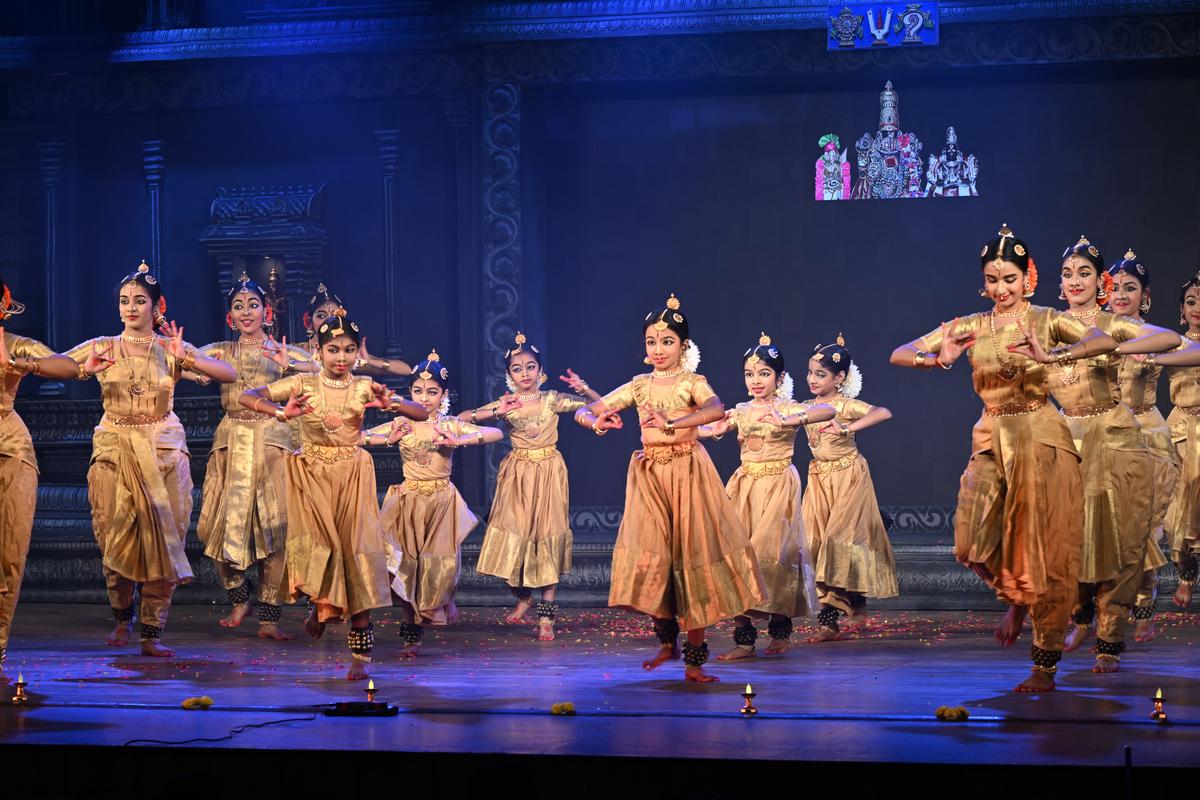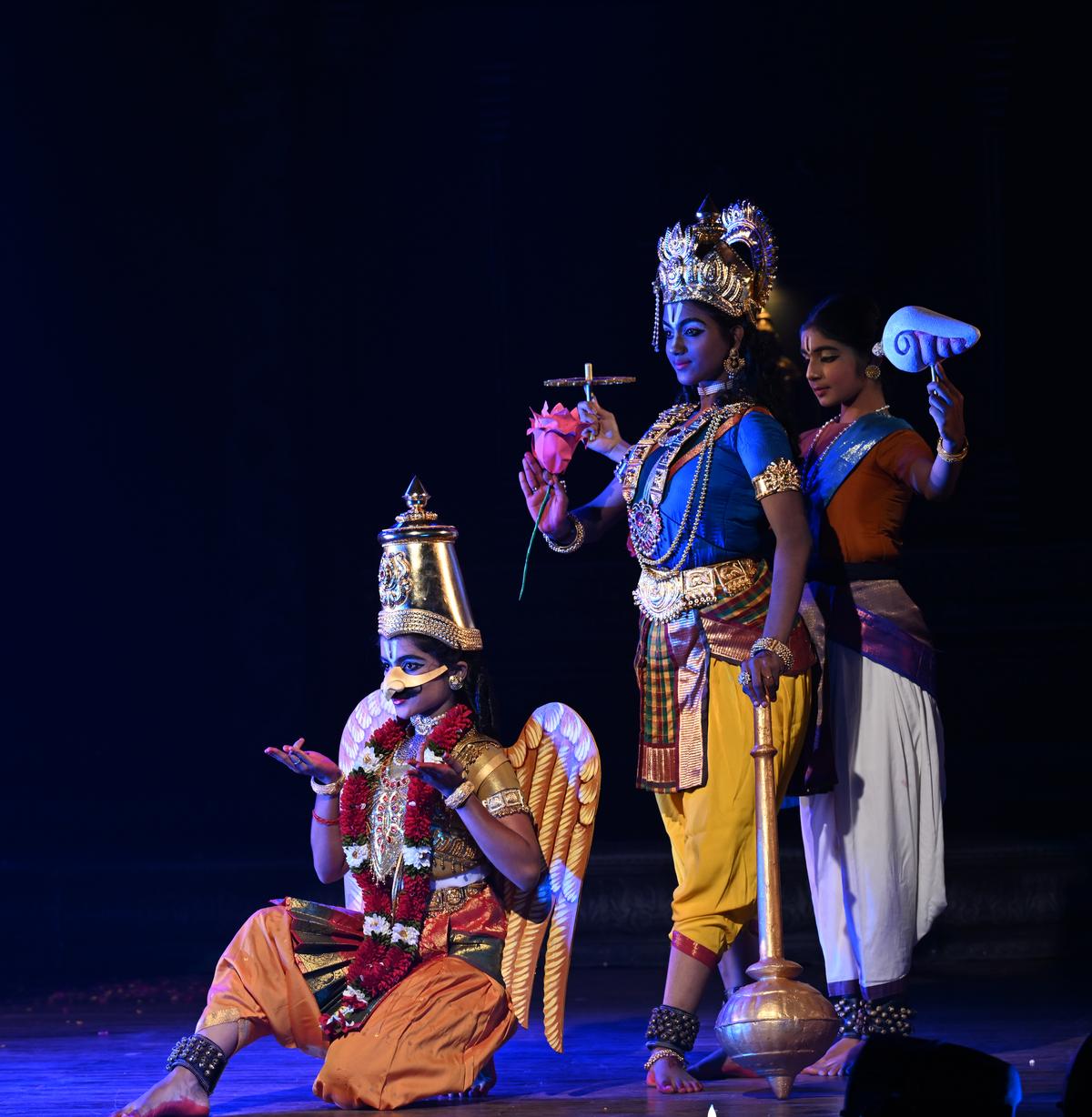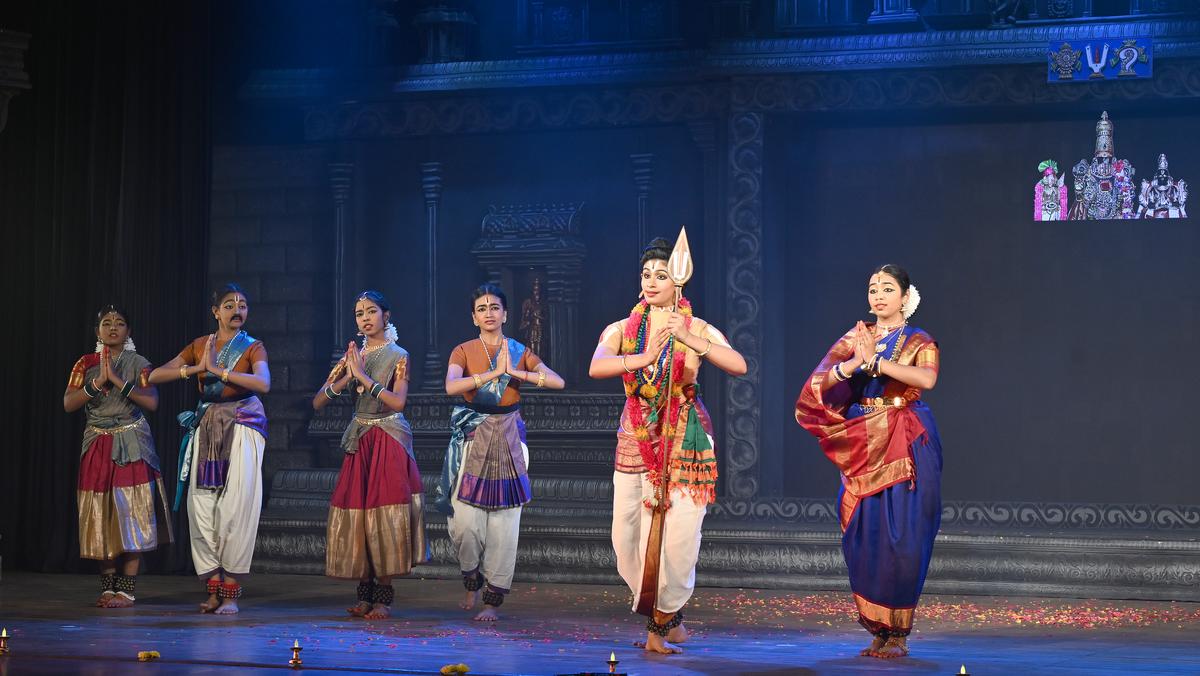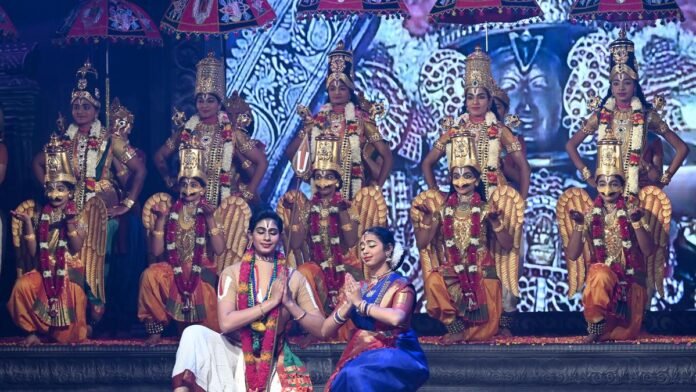
‘Ekadasa Vishnum’ was a celebration of the 11 Tirunangur Divya Desams
| Photo Credit: M. Srinath
It is an annual ritual for Asha Krishnakumar. Year after year, she chooses a Vaishnavite theme and after extensive research translates it into a full-fledged multimedia natya nadakam. Choosing 11 Vishnu temples referred to as Tirunangur Divya Desams, which form a part of the 108 Divya Desams, she recently presented ‘Ekadasa Vishnum’ at Narada Gana Sabha, under the banner of her Darshanam Art Creations.
Conceptualised and curated by Asha, the grand spectacle was visualised by Sheela Unnikrishnan along with the students of her Sridevi Nrityalaya. Music was by Rajkumar Bharathi, Sai Shravanam worked on the soundscape, narration and chanting by Malola Kannan, Chitra Madhavan, Rangan Bhattar, Vedharajan and Damal Ramakrishnan were the script consultants, lighting was by Murugan and Chella Videos handled the creative LED display. Shanmugam was the man behind the beautiful temple setting.
The eleven temples were divided into small groups, highlighting their association to legends of Rama, Krishna, Thayar, Perumal, Varadar and Srinivasa.

More than 70 dancers featured in the well-choreographed ‘Ekadasa Vishnum’
| Photo Credit:
M. Srinath
A tandavam performed by Shiva and 11 Rudras (emerging from the follicles of his hair) in the opening sequence portrayed the fiery form of Shiva with dramatic effect. The early life of king Tirumangai Mannan and his transformation to Thirumangai Azhwar formed the introductory narrative, after which the production travelled through the Kshetras with Azhwar and his wife Kumudavalli Nachiyar.
The pride of the ruler while feeding thousand devotees each day, the dilemma he faces when his treasury becomes empty, the wily ways of a dacoit, and the king’s transformation to a sublime state of surrender when he meets Perumal came across with clarity in the way the scene was choreographed and performer.
It was truly commendable that Sheela sustained the interest throughout, weaving a riveting presentation, despite limited information available on the sthala puranas of the temples. Stories or incidents pertaining to the deities relating to each segment of the production such as Govardhana Giri, Varaha Avataaram, Rama Ravana Yudham and Sempon Sei were introduced with brevity.

Ekadasa Vishnum was a combination of excellent choreography, music, lighting, costumes, stage setting and make up.
| Photo Credit:
M. Srinath
Working with more than 70 dancers is no easy task, Sheela not only managed it with aplomb but also remembered the name of each dancer when she announced during the curtain call. This commitment reflected in every segment. Entries, exits, synchrony of movements, and apt expressions flowed seamlessly.
The brisk change in scenes and costumes (a combination of Bharatanatyam dress and attires relating to characters) was appealing. Video projections between each scene introduced the audience to the architecture and history of the temples, which helped in the understanding of the narration.
The music, a blend of Carnatic and Hindustani ragas, had popular compositions such as ‘Sri Lakshmi Varaham’ and ‘Varadharajam Upasmahe’ fitted into it, appropriately. The chanting at regular intervals enhanced the whole experience by creating an aura of spirituality.

‘Ekadasa Vishnum’ was conceptualised and curated by Asha Krishnakumar at Narada Gana Sabha Hall in Chennai
| Photo Credit:
M. Srinath
The final sequence was undoubtedly the highlight of ‘Ekadasa Vishnum’. Featuring the Garuda Seva utsavam of Tirunangur, where all the 11 forms of Vishnu come together. Beginning with a beautiful depiction of Hamsa Vahana on which Azhwar and Nachiyar arrived, the introduction of each form of Vishnu and Garuda in a well-choregraphed sequence, using a combination of twos and threes, was captivating. The finale, which had all the 11 dancing together, left the audience awe-struck.

